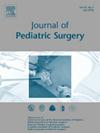开发和验证贝叶斯网络,预测受伤儿童到达医院后的插管情况。
IF 2.4
2区 医学
Q1 PEDIATRICS
引用次数: 0
摘要
背景:气道管理不当可导致可预防的创伤死亡。目前用于预测创伤患者插管情况的机器学习工具仅限于成人群体,其中包括患者到达时无法获得的预测因素。我们开发了一个贝叶斯网络,利用患者到达时或到达后立即可获得的可观察数据来预测受伤儿童和青少年的插管情况:从 2010 年 1 月到 2021 年 12 月,我们从美国外科医生学会认证的四个一级儿科创伤中心的创伤登记处获得了患者的人口统计学、受伤、复苏和转运特征。我们对贝叶斯网络进行了训练和验证,以预测儿科损伤后的紧急插管情况。我们使用接收者操作曲线和校准曲线下的面积评估了模型的性能:最终的模型 TITAN(创伤分析网络中的插管时机)包含五个因素:格拉斯哥昏迷量表、受伤机制、受伤类型(如穿透伤、钝伤)、收缩压和年龄。该模型的接收者操作特征曲线下面积为 0.83(95% CI 0.80,0.85),校准曲线斜率为 0.98(95% CI 0.67,1.29)。在二元概率阈值为 22.6% 时,TITAN 具有较高的特异性(98%)、阴性预测值(97%)和准确性(96%):TITAN贝叶斯网络利用创伤复苏早期可观察到的五个因素预测小儿创伤患者的插管风险。需要根据患者结果对模型性能进行前瞻性验证,以评估实际应用的益处和风险:预后和流行病学,III 级。本文章由计算机程序翻译,如有差异,请以英文原文为准。
Development and Validation of a Bayesian Network Predicting Intubation Following Hospital Arrival Among Injured Children
Background
Inadequate airway management can contribute to preventable trauma deaths. Current machine learning tools for predicting intubation in trauma are limited to adult populations and include predictors not readily available at the time of patient arrival. We developed a Bayesian network to predict intubation in injured children and adolescents using observable data available upon or immediately after patient arrival.
Methods
We obtained patient demographic, injury, resuscitation, and transportation characteristics from trauma registries from four American College of Surgeons-verified level 1 pediatric trauma centers from January 2010 through December 2021. We trained and validated a Bayesian network to predict emergent intubation after pediatric injury. We evaluated model performance using the area under the receiver operating and calibration curves.
Results
The final model, TITAN (Timing of Intubation in Trauma Analysis Network), incorporated five factors: Glasgow Coma Scale, mechanism of injury, injury type (e.g., penetrating, blunt), systolic blood pressure, and age. The model achieved an area under the receiver operating characteristic curve of 0.83 (95% CI 0.80, 0.85) and had a calibration curve slope of 0.98 (95% CI 0.67, 1.29). TITAN had high specificity (98%), negative predictive value (97%), and accuracy (96%) at a binary probability threshold of 22.6%.
Conclusion
The TITAN Bayesian network predicts the risk of intubation in pediatric trauma patients using five factors that are observable early in trauma resuscitation. Prospective validation of the model performance with patient outcomes is needed to assess real-life application benefits and risks.
Level of Evidence
Prognostic and Epidemiological, Level III.
求助全文
通过发布文献求助,成功后即可免费获取论文全文。
去求助
来源期刊
CiteScore
1.10
自引率
12.50%
发文量
569
审稿时长
38 days
期刊介绍:
The journal presents original contributions as well as a complete international abstracts section and other special departments to provide the most current source of information and references in pediatric surgery. The journal is based on the need to improve the surgical care of infants and children, not only through advances in physiology, pathology and surgical techniques, but also by attention to the unique emotional and physical needs of the young patient.

 求助内容:
求助内容: 应助结果提醒方式:
应助结果提醒方式:


